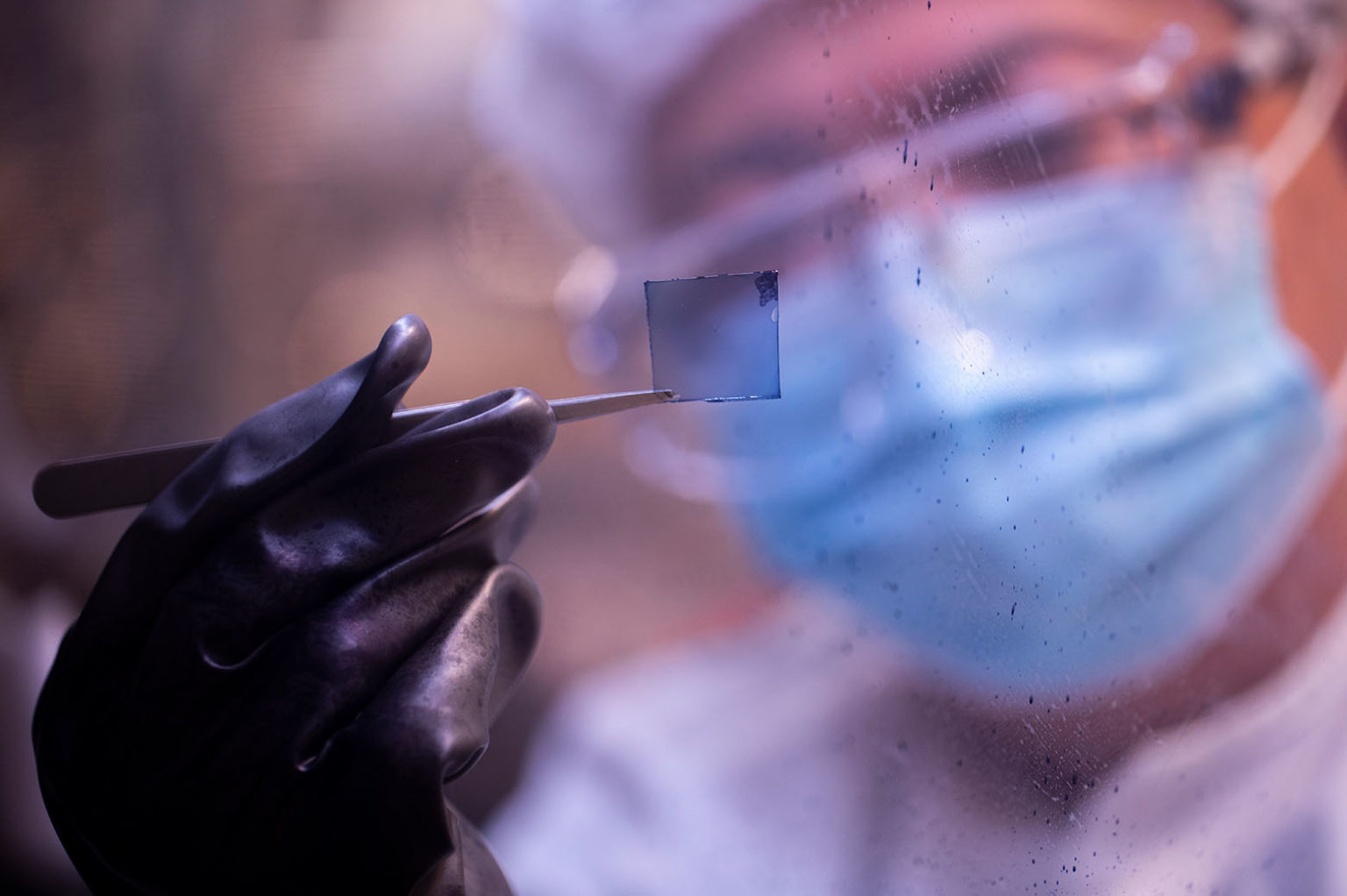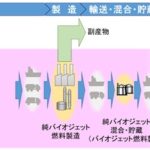(Transparent solar panels for windows hit record 8% efficiency)
2020/8/17 アメリカ合衆国・ミシガン大学

・ ミシガン大学が、ビルの窓での利用に最適な、高いエネルギー変換効率とガラス窓のような透過性を備えた有機薄膜太陽電池材料を開発。
・ 同材料による透明太陽電池では、酸化インジウムスズ(ITO)電極利用で 8.1%のエネルギー変換効率と 43.3%の透過率を達成。ビルの窓は可視光・赤外光の両領域のある程度の光を反射・吸収するコーティング処理により、眩しさやビル内の熱の低減を図っている。透明太陽電池は、このようなエネルギーを無駄にせず、ビルの電力需要への対応に利用する。
・ 優れた光吸収力、高電圧、高電流、低電気抵抗と無色透過性を獲得するため、新開発材料と太陽電池デバイス構造間において相反する複数要素の釣り合いを取った。新材料は、可視光を透過して近赤外光を吸収する有機分子を組わせたもの。オプティカルコーティングも併せて開発し、通常では競合する赤外光と可視光域の両方による発電力を強化した。
・ 銀電極を利用した透明太陽電池デバイスでは、10.8%のエネルギー変換効率と 45.8%の透過率を達成。ただし、同デバイスは若干緑がかっており、窓用アプリケーションによっては不向きな場合もある。
・ 光利用効率は、従来の透明太陽電池では約 2~3%のところ、ITO 電極の新太陽電池では 3.5%、銀電極ものでは 5%。両バージョンとも他の透明太陽電池のものに比べ毒性の低い材料を使用した大規模生産が可能。
・ また、使用する場所の緯度に合わせ、太陽光を最も効率的に取り込めるようカスタマイズが可能。同太陽電池は、二重ガラスの間に配置できる。
・ 今後の目標は、光利用効率 7%と電池寿命約 10 年を達成すること。また、新規・既存ビルへの透明太陽電池導入の経済性について調査中。
・ 本研究は、米国エネルギー省(DOE)の太陽エネルギー技術局(SETO)、米国海軍研究局(ONR)およびユニバーサル・ディスプレイ・コーポレーションが支援した。
URL: https://news.engin.umich.edu/2020/08/urban-solar-energy-solar-panels-for-windows-hit-record-8-efficiency/
<NEDO海外技術情報より>
(関連情報)
米国科学アカデミー紀要(PNAS)掲載論文(アブストラクトのみ:全文は有料)
Color-neutral, semitransparent organic photovoltaics for power window applications
URL: https://www.pnas.org/content/early/2020/08/12/2007799117
Abstract
Semitransparent organic photovoltaic cells (ST-OPVs) are emerging as a solution for solar energy harvesting on building facades, rooftops, and windows. However, the trade-off between power-conversion efficiency (PCE) and the average photopic transmission (APT) in color-neutral devices limits their utility as attractive, power-generating windows. A color-neutral ST-OPV is demonstrated by using a transparent indium tin oxide (ITO) anode along with a narrow energy gap nonfullerene acceptor near-infrared (NIR) absorbing cell and outcoupling (OC) coatings on the exit surface. The device exhibits PCE = 8.1 ± 0.3% and APT = 43.3 ± 1.2% that combine to achieve a light-utilization efficiency of LUE = 3.5 ± 0.1%. Commission Internationale d’eclairage chromaticity coordinates of (0.38, 0.39), a color-rendering index of 86, and a correlated color temperature of 4,143 K are obtained for simulated AM1.5 illumination transmitted through the cell. Using an ultrathin metal anode in place of ITO, we demonstrate a slightly green-tinted ST-OPV with PCE = 10.8 ± 0.5% and APT = 45.7 ± 2.1% yielding LUE = 5.0 ± 0.3% These results indicate that ST-OPVs can combine both efficiency and color neutrality in a single device.



